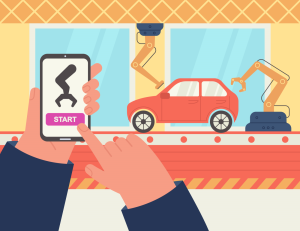Understanding the Nine Phases of Productivity - Phase Six
Phase Six is characterised by using automation to improve and streamline workflow management.
A Typical Phase Six Business
Your staff are processing jobs following the SOPs built into your system. However, you are starting to pick up elements of dissatisfaction and complaint. For example, "The system is inflexible," "It would be better if...," "It was better the old way, when I could adjust the process when 'stuff' happens..."
As your SOPs standardise the job processes used, different people will start to complain they had alternative ways of solving issues using the old system. You will start to find people implementing workaround processes and alternative processes 'for reasons...' and likely there are legitimate events that trigger the workarounds, but the system is not accommodating of the reasons; "It is easier to do it outside the system."
Additional, most of your processes will contain steps that people classify as routine, boring, repetitive, and/or 'grunt work,' and ask "Why am I doing this?" Often, such mundane tasks can take up a lot of people's day doing such work. Furthermore, the work can be so repetitive that their attention drifts, leading to data or process errors.
It’s becoming clear that there is still room for improvement and capacity savings.
The Transition Journey From Phase Five
You are now looking for ways to 'work smarter, not harder'. You'll start by identifying response-driven tasks, that are simply reactions to events, and creating automations that react without requiring human input.
You'll identify the most commonly occurring events that trigger alternative workflows, and use these to make your SOPs data-aware, incorporating the necessary alternative process.
Increasingly, your system will contain SOP automations, such that when the details, or requirements of a job change, the SOP being run will update to reflect this.
Increasingly, your system will notify you when material changes occur, human action is required, or notifications need to be sent. You will automate more and more of your routine communications so they are automatically sent out of the system to customers or suppliers at the appropriate time/stage in the job, without human effort.
As staff start to adopt the new SOPs they will find that they can add branches and special case tasks into their jobs SOP, and delete what's not required on the fly. Data entry fields will also adjust when there is a requirement to capture or report different data than a standard job would require.
The Benefits of Completing Phase Six
Your SOPs are event-driven, continually updating and adjusting in real-time based on the job’s state, and the progress of the work being performed on the specific job.
- You are experiencing fewer service failures, increased productivity and output, and improved customer service across the board.
- The system reacts to changes and divergences in the environment by updating the job to incorporate a more appropriate SOP.
Staff capacity is freed up increasing the amount of value they deliver to the business and your customer base with the same amount of time in a day.
- The system completes actions that previously required a human, such as updating job information or status, monitoring jobs, and sending information to external parties.
- Suppliers and customers are notified of status and progress updates automatically and reliably at the appropriate stages for that job.
Your SOPs automatically enter data and execute tasks based on external events or notifications. Full workflow automation increases the timely communication by the business with its suppliers and customers, enhancing the productivity of its employees.
- Operational staff will no longer need to constantly monitor the progress of a job in order to know when to act.
The management of risk and value-adding strategy
Leverage becomes available from managing variability and risk. Management focus is on minimising work-in-progress in order to accelerate flow. The meta-processes of the business become levers to access substantial productivity gains.
Phase Seven to Nine are a focus on management methodology (the management of risk and value-adding strategy)
- Phase Seven – Constraint Management, “Getting more control over your workload”
- Phase Eight – Buffer Management, “Managing “at risk” jobs before they cause damage”
- Phase Nine – Work Mix Management, “Managing the sales and work mix to optimise throughput”
